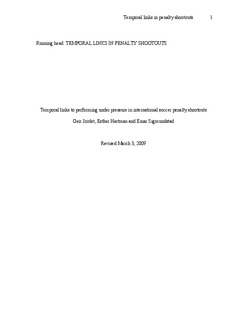| dc.contributor.author | Jordet, Geir | |
| dc.contributor.author | Hartman, Esther | |
| dc.contributor.author | Sigmundstad, Einar | |
| dc.date.accessioned | 2010-03-23T13:57:12Z | |
| dc.date.issued | 2009-11 | |
| dc.identifier | Seksjon for coaching og psykologi / Department of Coaching and Psychology | |
| dc.identifier.citation | Psychology of Sport and Exercise. 2009, 10(6), 621-627 | en |
| dc.identifier.issn | 1469-0292 | |
| dc.identifier.uri | http://hdl.handle.net/11250/170599 | |
| dc.description | I Brage finner du siste tekst-versjon av artikkelen, og den kan inneholde ubetydelige forskjeller fra forlagets pdf-versjon. Forlagets pdf-versjon finner du på www.sciencedirect.com: http://dx.doi.org/10.1016/j.psychsport.2009.03.004 / In Brage you'll find the final text version of the article, and it may contain insignificant differences from the journal's pdf version. The definitive version is available at www.sciencedirect.com: http://dx.doi.org/10.1016/j.psychsport.2009.03.004 | en |
| dc.description.abstract | Objectives: This study examined the temporal characteristics of performing under pressure in a high-stakes real-world sport situation. Design:
Behavior observation analyses were conducted of televised soccer games.
Methods: Videos were obtained from all penalty shootouts ever held in three major international soccer tournaments (World Cup, European Championships, and UEFA Champions League). In these events, 296 players performed 366 penalty kicks. The time periods that were analyzed in relation to shot outcomes were: walking, ball placement, back-up, signal waiting, signal response, and run-up. Results: Several time intervals were linked to performance. For example, longer times to respond to the referee's ready signal were related to more goals and shorter times were related to more misses. A similar weak trend was found for ball placement. Time to wait for the referee signal went in the other direction, with shorter times giving more goals.
Conclusions: Shorter self-imposed times were linked to worse performance than longer times. Plausible reasons for this result may be the extreme levels of pressure that are induced by major penalty shootouts, causing performers to attempt escaping the emotional distress by getting the situation “over with” as soon as possible. These results are consistent with a model of choking as a case of self-regulatory breakdown. | en |
| dc.format.extent | 136650 bytes | |
| dc.format.mimetype | application/pdf | |
| dc.language.iso | eng | en |
| dc.publisher | Elsevier | en |
| dc.subject | reaction time | en |
| dc.subject | avoidance | en |
| dc.subject | attention | en |
| dc.subject | football | en |
| dc.title | Temporal links to performing under pressure in international soccer penalty shootouts | en |
| dc.type | Peer reviewed | en |
| dc.type | Journal article | en |
| dc.subject.nsi | VDP::Social science: 200::Social science in sports: 330::Other subjects within physical education: 339 | en |
| dc.subject.nsi | VDP::Medical disciplines: 700::Sports medicine: 850::Exercise techniques: 851 | en |
| dc.source.pagenumber | 621-627 | en |
| dc.source.volume | 10 | en |
| dc.source.journal | Psychology of Sport and Exercise | en |
| dc.source.issue | 6 | en |
